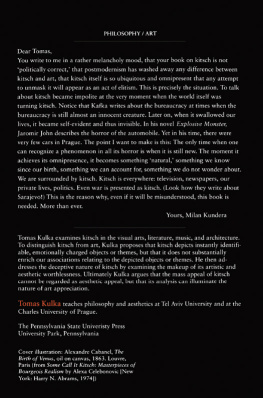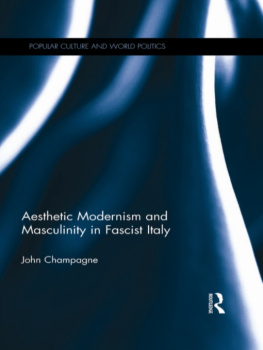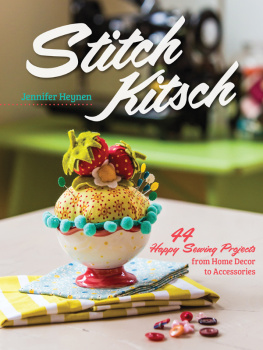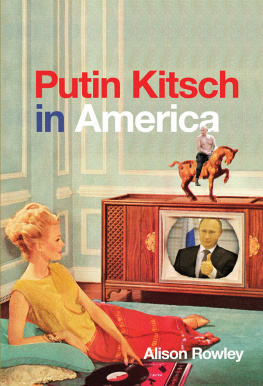Kitsch and Art
Library of Congress
Cataloging-in-Publication Data
Kulka, Tom.
Kitsch and art / Tomas Kulka.
p. cm.
Includes bibliographical references and index.
ISBN 0-271-01556-X (cloth)
ISBN 0-271-01594-2 (paper)
1. Kitsch.
2. Arts, Modern20th century.
I. Title. NX456.5.K54K86 1996
700dc20 95-20626
CIP
Copyright 1996
The Pennsylvania State University
All rights reserved
Published by
The Pennsylvania State University Press,
University Park, PA 16802-1003
It is the policy of The Pennsylvania State University Press to use acid-free paper for the first printing of all clothbound books. Publications on uncoated stock satisfy the minimum requirements of American National Standard for Information SciencesPermanence of Paper for Printed Library Materials, ANSI Z39.48-1992.
CONTENTS
As the title suggests, this book involves two distinct fields of inquiry. One, which is quite specific, pertains to the peculiar nature of kitsch. The other pertains to art appreciation in general. Shouldnt these two topics be dealt with independently? In view of the contention (endorsed in this essay) that kitsch is discontinuous with art, shouldnt one keep kitsch and art appreciation as far apart as possible?
That the two areas of inquiry could be treated independently is obvious enough. Theses about the nature of kitsch have been advanced without consideration of the nature of art appreciation, and vice versa. The first reason for the link is essentially autobiographical. I have not been able to explain to myself the aesthetic deficiencies of kitsch without entering into broader issues pertaining to aesthetic evaluation and art appreciation in general. Questions such as why kitsch is bad have led to more general questions such as, What do we value in real works of art? How can we justify aesthetic value judgments? For some questions I have not found satisfactory answers in current theories of art. I thus found it necessary to make some amendments to the prevailing conceptions of aesthetic value judgments and art appreciation in general. These amendments, revisions, and elaborations naturally do not amount to a comprehensive theory of art evaluation, and kitsch remains the central focal point of this inquiry. However, some of the conclusions clearly transcend the bounds of this specific topic.
The second reason for dealing with kitsch and art appreciation together is the conviction that analyzing artistic failures and borderline cases of art may help us to see more clearly what it is that we ought to look for in respectable works of art. Since kitsch could be, in a certain sense, seen as an antithesis of art, an analysis of its characteristic features may indirectly shed some light on the nature of art itself.
proposes criteria for the identification of kitsch. From the discussion of kitsch in relation to visual art, three conditions that govern the application of the concept emerge. Each of these three conditions, I argue, should be regarded as necessary and jointly as sufficient. What thus emerges in this chapter amounts to a classificatory definition of kitsch.
deals mainly with the deceptive nature of kitsch. Its central questions are: What does the aesthetic and artistic worthlessness of kitsch consists of? Is kitsch continuous with art or does it form a sui generis category antithetical to art? I demonstrate that the appeal of kitsch is totally parasitic on the emotional charge of its subject matter, and has little to do with the specific features of its rendering. The conclusion is that kitsch differs radically not only from good art but also from bad and mediocre works of art, and that the appeal of kitsch cannot be regarded as aesthetic appeal.
The discussion in the first two chapters is restricted to kitsch in relation to the visual arts. deals with manifestations of kitsch in other artistic genres.
It is not the aim of this book to be exhaustive or definitive in any sense. The sections on literature, music, and architecture are at best only sketchy. Comprehensive treatment of these subjects certainly requires further analysis by experts trained in literary criticism, musicology, and theory of architecture. What this book aims for is to draw attention to a phenomenon that is central to our culture, yet has been hitherto neglected. This neglected category requires further study.
The idea of writing a book on kitsch and art appreciation came from Avishai Margalit, to whom I am indebted for many stimulating discussions and for his encouragement at various stages of the work. I also thank Nelson Goodman for encouragement and comments on an early version of . I have also benefited from discussions with Meirav Aviad, Gilad Barelli, Yael Cohen Ben-Porat, Menachem Brinker, Jonathan Broido, Yair Gutman, Ruth Hacohen, Yifat Maoz, Eli Weisstub, and Eddy M. Zemach. I am also considerably indebted to Anat Weissman for her constructive criticism and suggestions.
I especially thank Bosmat Alon, Doron Avital, and Amos Noi for reading the manuscript and for their valuable suggestions for improvements.
As we have already noted, the very possibility of defining or characterizing aesthetic concepts and categories of art has been denied by a number of prominent philosophers. Since the concept of kitsch is treated here as an aesthetic category, I would like to examine the arguments of the two most influential proponents of this view, in order to show that they are misconstrued (in the case of Morris Weitz) or inapplicable (in the case of Frank Sibley).
In his frequently anthologized article The Role of Theory in Aesthetics, Morris Weitz concentrates mainly on the concept of art itself, but claims that his conclusions equally apply to its subcategories such as novel, tragedy, comedy, opera, painting, portrait, and other aesthetic concepts and categories. Weitz briefly surveys some definitions and theories of art and points out their inadequacies. But this is not his main point. The inadequacy of these theories, he says, is not primarily occasioned by any legitimate difficulty such... as the vast complexity of art which might be corrected by further probing and research (122). Weitz claims that their basic inadequacies reside in a fundamental misconception about aesthetic concepts as such: [the] attempt to discover the necessary and sufficient properties of art is logically misbegotten for the very simple reason that such a set and, consequently, such a formula about it, is never forthcoming. Art, as the logic of the concept shows, has no set of necessary and sufficient properties; hence a theory is logically impossible and not merely factually difficult (122).
To elucidate this point Weitz turns to Wittgensteins discussion of the concept of game. Wittgenstein points out that the fact that different activities (e.g., board-games, card games, ballgames, Olympic games, etc.) are all called games does not imply that there must be some property or set of properties that they all share. Weitz claims that [t]he problem of the nature of art [and other aesthetic categories] is like that of the nature of games.... If we actually look and see what it is that we call art, we will also find no common propertiesonly strands of similarities (126). Weitz calls such concepts open, as opposed to closed concepts, for which necessary and sufficient conditions can be stated. The concept of art thus cannot be defined because it is an open concept. Since the only concepts that are closed, according to Weitz, are the concepts of logic and mathematics, the argument is extended to subcategories of art and aesthetic concepts in general.
Let us first consider Weitzs claims that definitions of aesthetic categories are not merely factually difficult but
Next page






